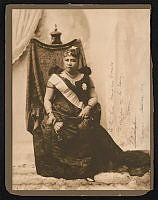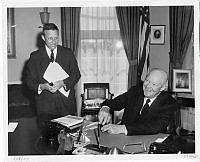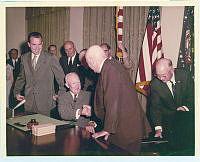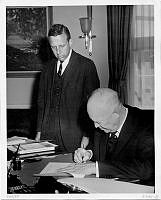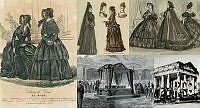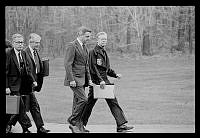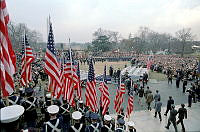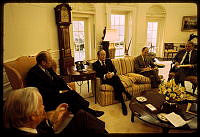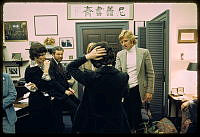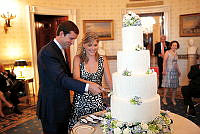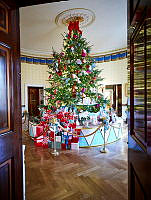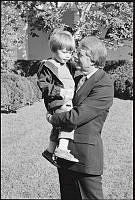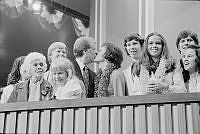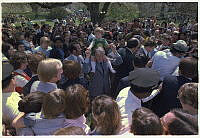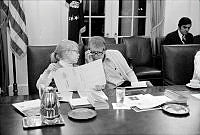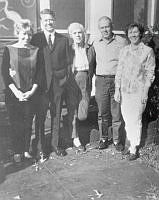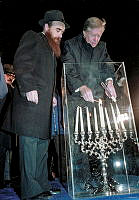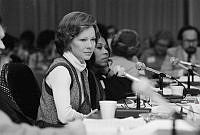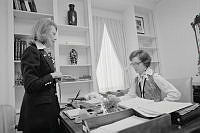White House Decorative Arts in the 1860s
Copyright © White House Historical Association. All rights reserved under international copyright conventions. No part of this article may be reproduced or utilized in any form or by any means, electronic or mechanical, including photocopying, recording, or by any information storage and retrieval system, without permission in writing from the publisher. Requests for reprint permissions should be addressed to books@whha.org
James Buchanan, our only bachelor president, chose his niece Harriet Lane to assume hostess and decorating duties. With a $20,000 furnishings appropriation, Lane purchased a marble clock, serving ware, walnut furniture, china, lighting fixtures, carpets and a gilt-framed mantel mirror, all from Philadelphia. The Blue Room suite, imported from France by James Monroe, was long out of style and what remained of it went to auction in 1860. It was replaced by a nineteen-piece, gilded Rococo Revival suite, of which a circular divan was the focal point.
When Abraham Lincoln moved into the President's House in 1861 the state floor and private quarters were in a "miserable condition." With the approach of Civil War, Lincoln paid little attention to furniture and decorating. He left the purchases to his wife Mary Todd Lincoln and despite a $20,000 appropriation for furnishings the budget was exceeded. Two supplemental appropriations were needed to pay for a spending spree that included a French porcelain dinner and dessert service, carpets, French wallpapers, draperies, and an ornate, laminated mahogany bedroom suite that included the Lincoln Bed. Successor Andrew Johnson received funds to renovate the now well-worn furnishings and left the arrangements to his daughter, Martha Patterson. By the end of Johnson's tumultuous term in 1869, more than $135,000 had been spent on the repair and renovation of the house.

Decanter and Fruit Basket. E. V. Haughwout, New York, 1866. Andrew Johnson reordered additional pieces of the Lincoln dinner service and glassware because so much breakage had occurred since 1861.













